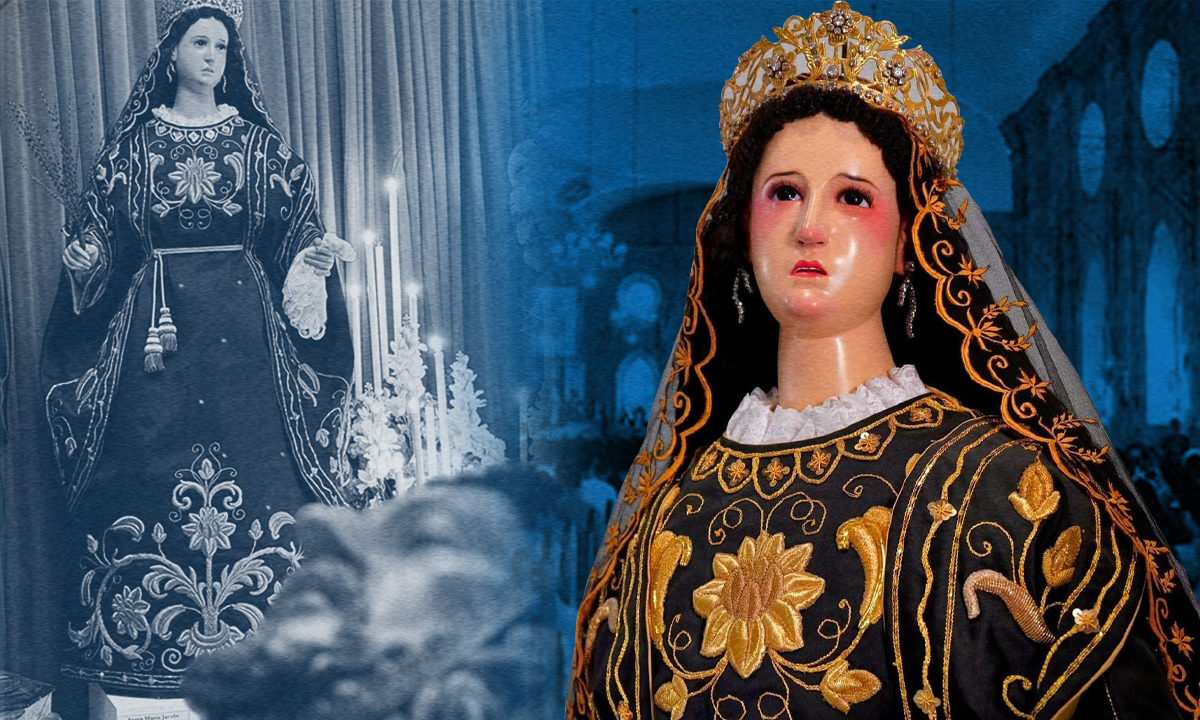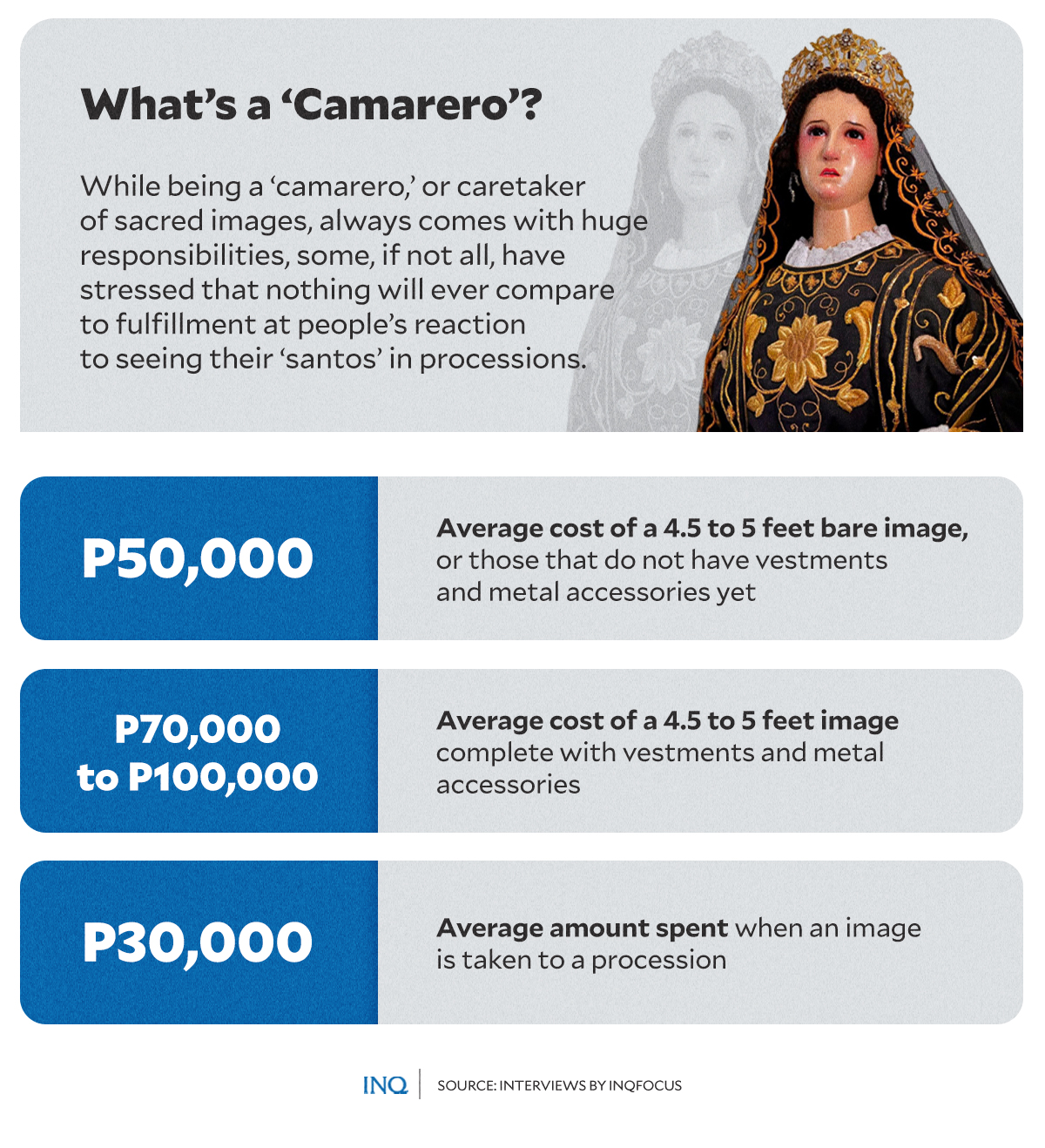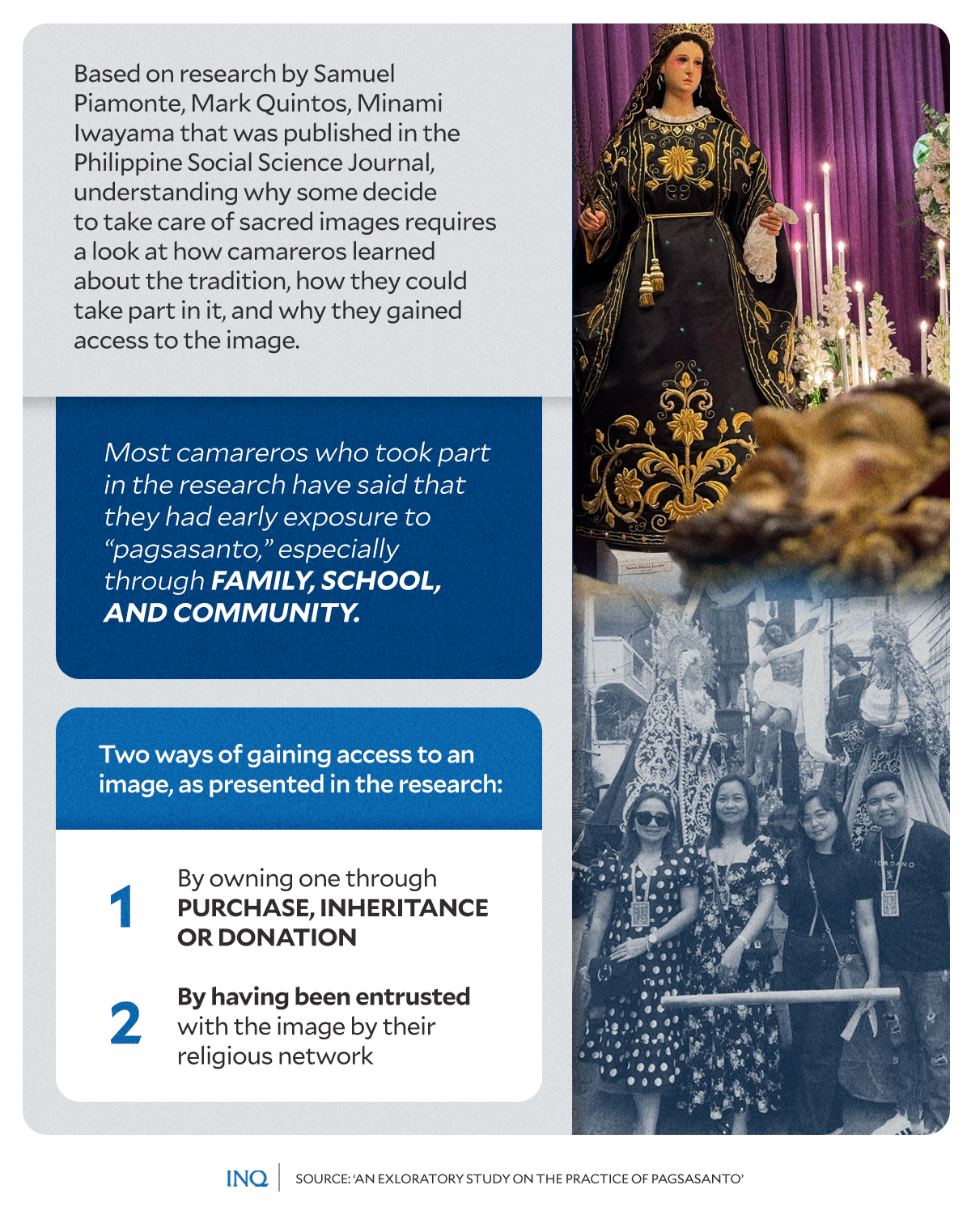‘Camareros’: Caretakers of church statues we see on Holy Week
MANILA, Philippines — “Prayer in motion.”
This was how the Diocese of Kalibo described religious processions, especially the one for the Pasos, a procession of images in carrozas — carriages — depicting the passion, death, and resurrection of Christ.
The diocese, in the document “Directives on Holy Week Processions,” highlighted the significance of the tradition, saying that it was a way to “instill in the hearts and minds of the faithful the price of our redemption and the love of God as shown by the willing sacrifice Jesus Christ made to redeem mankind from the slavery of sin.”
RELATED STORY: Undiluted devotion: Exploring Manila’s centuries-old tradition of Visita Iglesia
“Lest we forget: Why do we have a procession of ‘Pasos’ during Holy Week and Easter Sunday?” the document, prepared by the Diocese of Kalibo’s Commission on Sacred Liturgy, stated as it stressed the tradition’s end goal: To strengthen and renew the faith of the people.
This is why “camareros” or “santeros,” take their responsibilities as caretakers of sacred images seriously, with one pointing out to INQUIRER.net that nothing will ever compare to the sense of fulfillment they feel after taking out their santos for processions.
‘Panata’
As Jonathan Mercado from Malolos, Bulacan said: “The fact that we are able to help people strengthen their faith brings us great happiness. This is already our commitment.”
Mercado and his relatives, like Charish Sandoval, decided to finally become camareros a few years back, when they visited an exhibit, which, they said, is where their childhood dream of becoming santeros has been reignited.
This is why now, they already have the image of the El Descendimiento, a depiction of Christ’s “descent from the cross,” which has six to seven images, including Jesus Christ, the Mater Dolorosa, John the Apostle, Mary Magdalene, and Joseph of Arimathea.
RELATED STORY: Holy Week 2024: Heritage churches beckon for ‘Visita Iglesia’
For Mercado, this has already become a panata, or sacred vow.
“We treat our images as family, and as years pass, this commitment is becoming even more steadfast, especially since it likewise brings closeness to our family, giving all of us a chance to bond while preparing our images for processions,” Mercado said.
As he and Sandoval stressed, this is the reason that despite the overwhelming costs of getting and maintaining even one image, they would always be willing to live a life as camareros.
Sacrifice
Based on INQUIRER.net’s interview with Mercado and Sandoval, the average cost of a bare 4.5 to 5 feet image is P50,000. With complete vestments and metal accessories, the cost could be as high as P70,000 to P100,000 an image.
However, as pointed out by Emmanuel David, a santero from Betis in Guagua, Pampanga, “the reputation and quality of the work of the sculptor and the materials to be used are important factors to consider as well in determining the overall price.”
The demand is a factor to consider, too, he told INQUIRER.net, saying that on Holy Week and fiestas, prices tend to go higher. But as camareros often say, this and the physical work required in taking care, and especially in the preparation of images for processions, is nothing compared to the happiness they feel when people get to see them.
As David, Mercado, and Sandoval said, considering the requirements for a procession, like band rental, decorations, gas expenses, compensation for those who would help, and preventive conservation, an average of P30,000 to P50,000 is needed every time their images are taken out for processions.
RELATED STORY: Holy Week 2024 will be typhoon-free, says Pagasa
For David, the devotion fostered and nurtured by his elderly remains the “driving force that sustains me and my family,” so being a santero “is our way of thanking our patron saints for all the blessings [we have] received.”
He said, what they do as camareros is a sacrifice as well to preserve the decades-old tradition and teach new generations of Roman Catholics about their faith, especially the Paschal Mystery, which the Diocese of Kalibo said is the one “celebrate[d] in the Holy Eucharist.”
Legacy
As the Diocese of Kalibo explained, most of the heirloom Pasos used for Holy Week processions were historically owned by the parishes, in some cases even up until the mid-20th century.
“The cost and burden of maintenance and upkeep, however, must have compelled the parish priests to ‘award’ these images to selected, relatively prominent families, who have the willingness and capacity for custodianship and upkeep of these images,” the diocese said.
“They [then] became ‘caretakers’ of the images and of the faith,’ and the images passed down through generations,” it said as it stressed that processions are a “dramatic method of teaching the Catholic Faith to unlettered masses.”
RELATED STORY: Holy Week reflections
Based on research by Samuel Piamonte, Mark Quintos, Minami Iwayama that was published in the Philippine Social Science Journal, most camareros gained access to an image by (1) owning one through purchase, inheritance, and tradition and (2) by having been entrusted with the image by their religious network.
Like Mercado and Sandoval, most camareros who took part in the research have said that they had early exposure to pagsasanto, especially through family, school, and community.

















